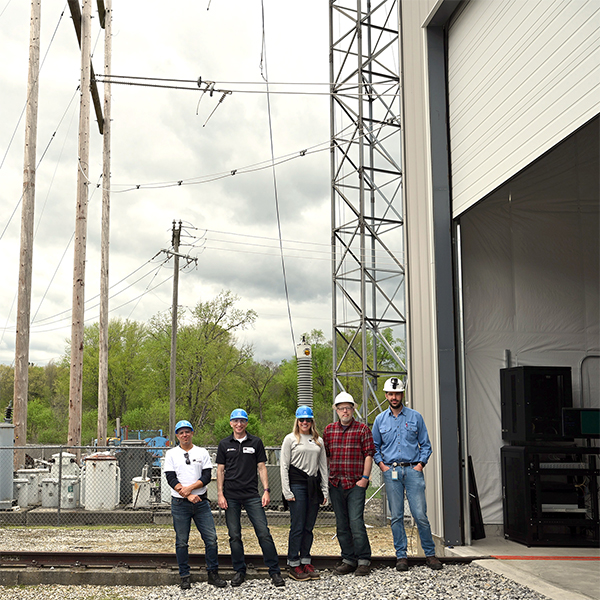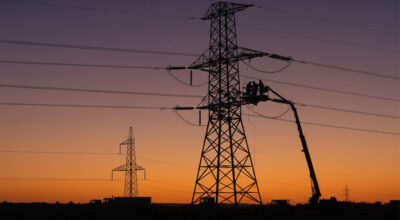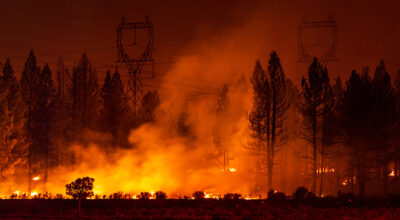There are a few reasons behind Prisma Photonics technology’s recent selection by the Electric Power Research Institute (EPRI) Grid-Enhancing Technologies for a Smart Energy Transition (GET SET) initiative.
The Electric Power Research Institute (EPRI) is an American independent, nonprofit organization that conducts research and development related to the generation, delivery, and use of electricity to help address challenges in the energy industry, including reliability, efficiency, affordability, health, safety, and the environment.
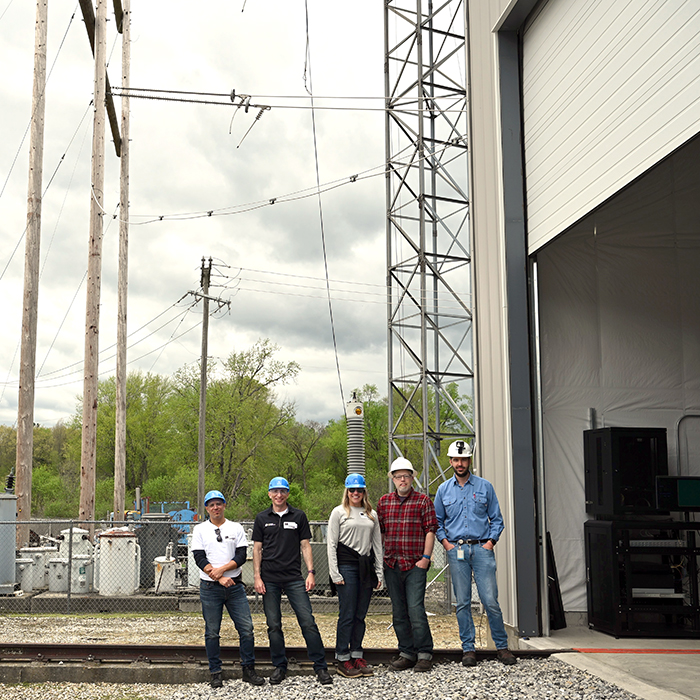
The EPRI and Prisma Photonics teams at the EPRI Lenox T&D Lab
The EPRI GET SET Goals
The combination of an aging grid and extreme weather events affecting the grid capacity, and the projected considerable increase in power demand, is what motivated EPRI to launch the GET SET project that aims to accelerate research and the adoption of technologies that can increase grid capacity, reliability, and efficiency.. EPRI has already published the Climate READi framework to look at long-term planning with weather risk considerations, the evolution of risk without targeted adaptations, and the evaluation and selection of adaptation strategies to reduce risk. Prisma Photonics’ Dynamic Line Rating (DLR) technologies are exactly what EPRI was looking for to perform its research and system evaluation. It can enhance the grid capacity and boost resilience, alerting on extreme weather events, from freezing storms that cover the transmission lines in ice to wildfires endangering the entire grid.
After demonstrating its ability to expand line capacity in Europe and Israel, Prisma Photonics is now increasingly adopted in the USA as the preferred technology supplier to increase transmission lines’ capacity and provide real time information about line health and early warning about developing issues. So, let us dive into why EPRI selected Prisma Photonics for its GET SET Initiative.
The Extreme Weather Events’ Impact on the Electric Grid
As EPRI President and CEO Arshad Mansoor said when the Climate READi framework was published in 2022, “In just the past three years, there have been 70 confirmed U.S. weather and climate-related disasters — a significant increase over previous years — and whose losses have each exceeded $1 billion. Extreme weather and climate are urgent problems.”
Since then, the number of extreme weather events has only increased. The graph below shows the history of billion-dollar disasters in the United States each year from 1980 to 2024, showing event type (colors), frequency (left-hand vertical axis), and cost (right-hand vertical axis) adjusted for inflation to 2024 dollars.
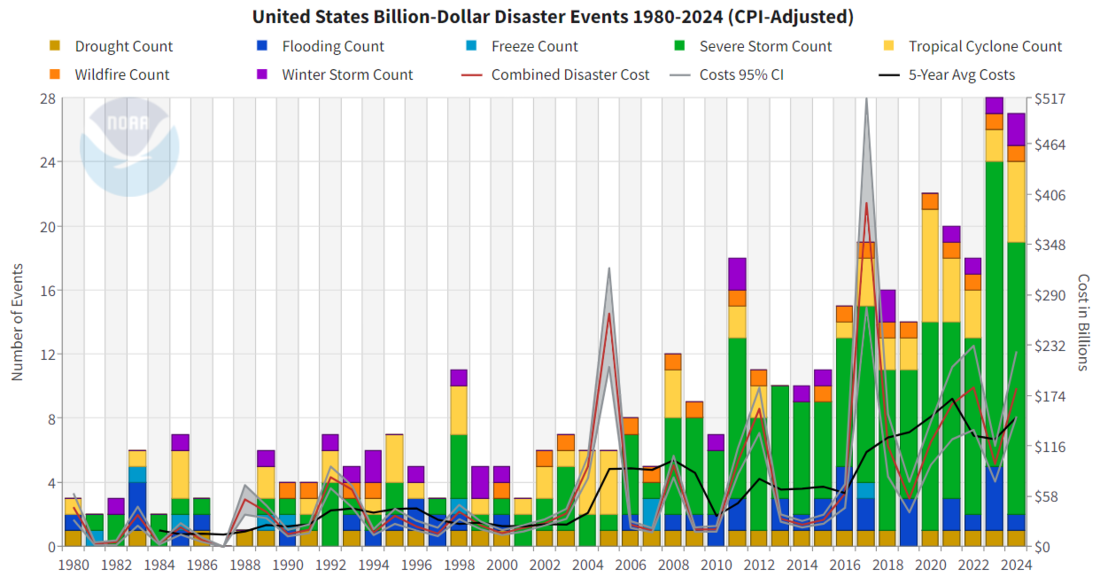
Source: Climate.gov
In 2024 alone, there were 27 extreme weather events, and, though the data for 2025 are not yet available, the January 2025 California catastrophic wildfire started the year with a location untouched by weather-induced disaster in 2024, a bad omen for this year’s statistics.
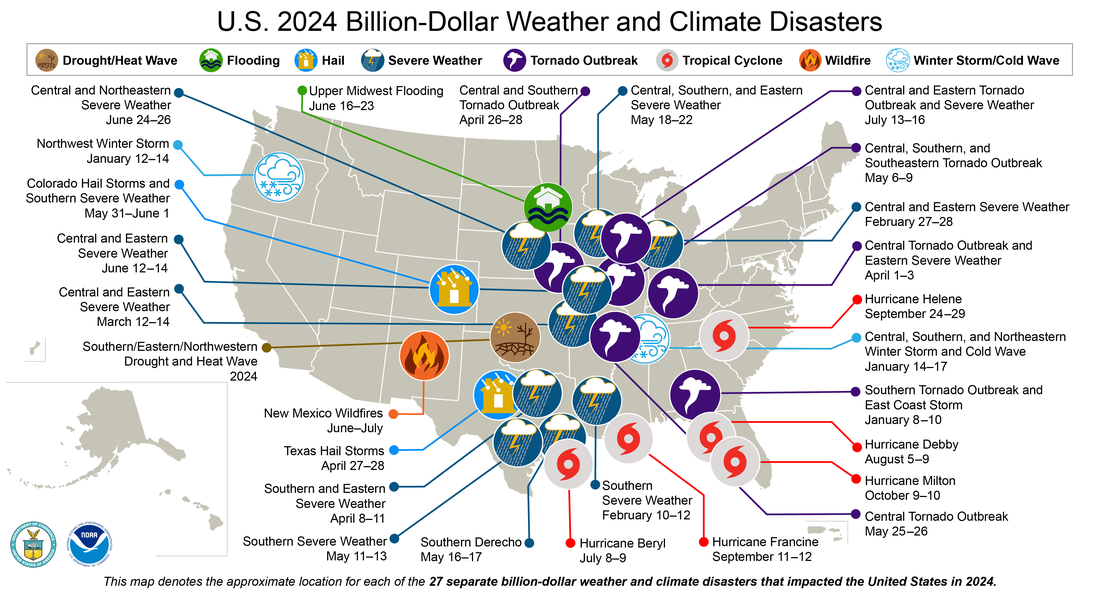
Source: Climate.gov
Winter storms
After winning the 2021 New York-Israel Smart Energy Innovation Challenge, Prisma Photonics’ pilot immediately proved its efficacy by detecting icing depositing on line spans in real time as it happened during the winter 2023 record-breaking snowfalls and freezing temperatures.
As Alan Ettinger, senior director of research, technology development and innovation at New York Power Authority noted about this specific event in his Line Monitoring, New York Style paper, “Perhaps most important to NYPA’s efforts to deliver reliable service in areas of New York that get extremely cold is Prisma Photonics’ ability to detect icing on line spans. Data captured directly from the lines through fiber sensing was correlated with weather information. […] Having real-time notification of icing alerts enables NYPA to act and correct the situation before any damage is done to the asset […] There are, of course, considerably more benefits that can be realized with large-scale, continuous monitoring of power lines. The utility can use the technology to detect wildfires, high winds, and other extreme weather events that can affect the reliability of the grid.”
Wildfires
Looking at the history of disasters graph, there appears to be a direct correlation between drought events and the growing occurrence of wildfires. The cost of wildfires is also increasing, as is their spread in terms of number of acreages affected.
With power lines identified as an increasing risk to cause wildfires, any technology, such as Prisma Photonics, able to identify issues in time to resolve them before they start a fire can have a major impact.
In addition to its high precision and early-stage detection of issues potentially leading to a spark leading to a fire, Prisma Photonics optic fiber sensors can detect and identify unrelated wildfires in transmission lines vicinity, even in places outside traditional fire detection range This includes, for example, rural areas where a transmission corridor passes but no sensors or cameras are present.
Prisma Photonics senses for temperature changes at scale. Heat waves hitting the optical fiber are detected as they happen and measured with distributed acoustic sensing (DAS). Considerable changes over large areas point out events such as brush or wildfires.
Proximity to a wildfire directly affects transmission lines, creating issues ranging from soot deposits to damage due to the heat. Such damages require immediate attention to maintain the grid integrity in affected areas. Prisma Photonics ability to detect, diagnose, and locate those to the related transmission span, accelerate maintenance by directing line workers exactly where they are needed and with prior knowledge of the problem they will face.
High Winds and Severe Storms
Wind-related extreme weather events are the most frequent ones recorded. The immediate danger of high wind is the appearance of bouncing or galloping lines and debris like tree branches or loose objects propelled on the lines by wind gusts. Prisma Photonics can detect strong winds and galloping power lines swaying or bouncing in strong winds. And physical anomalies where things or people hit the towers or the lines.
The risk of damage is increased if the lines have already been weakened by Aeolian vibrations, the subtle, high-frequency trembling of the wires. Over time, this constant, rapid jiggling can cause the conductor strands to weaken and break, especially where they’re clamped to the towers, much like repeatedly bending a paperclip until it snaps.
This can wear down the spacers that keep them apart, risking a clash between wires and a short circuit. Such weakened lines are more at risk when strong winds and severe storms occur.
Prisma Photonics technology can also act preemptively by pinpointing which spans have been weakened by Aeolian vibrations, allowing for early intervention and affected line strengthening.
Transmission Line Capacity Limits
Erring on the side of caution is a must when talking about electricity. The classic stating rating system relies on set capacity limits, typically calculated based on the most challenging anticipated conditions. While this approach helps maintain safety, these lines they monitor carry far less power than they can.
With the forecasted major rise in power demand, the under-capacity usage resulting from this conservative approach can be a boon to increase existing line capacity at low cost with GET technologies.
As explained by Jigar Shah, Director of the U.S. DOE Loan Program Office (March 2021-Jan 2023), ”Dynamic line rating and topology optimization can increase system utilization by allowing for transmission lines to increase power flow while still operating within safe capacity margins.”
Unlike other static and discrete sensor-based DLR solutions, the Prisma Photonics DLR solution (AKA, PrismaCapacity) continuously senses along the entire transmission line, measuring wind metrics on each and every span, as not all line spans are cooled the same.
This enables continuous detection of the critical span – the less cooled span – that bottlenecks the line ampacity. This span’s weakest link is not static. Its location constantly shifts, as the span temperature is affected by wind variation, other weather events, or wildfires. Prisma Photonics monitors every span and continuously tracks the critical span’s movements.
With its ability to pinpoint the dynamic location of the critical span, Prisma Photonics provides safer thermal and line rating recommendations, ensuring its protection at any given time.
These capabilities, unique to Prisma Photonics, are now evaluated by EPRI for their efficiency and reliability. The results of EPRI’s 3rd party testing will enable utilities to adopt the evaluated technologies with greater confidence.
Learn more on why EPRI selected Prisma Photonics for its GET SET initiative in the official press release



